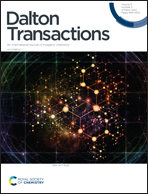Roughening the surface of porous NiCoP rod-like arrays via the in situ growth of NiCoP4O12 nanoislands enables highly efficient energy storage†
Abstract
In this study, a porous structure was initially constructed in the primitives of NiCoP electrode array nanorods based on the principle of the Kirkendall effect, and then phosphate particles generated by an in situ oxidation process were attached to the surface. In the tri-electrode system, the specific capacity was increased to 0.9583 mA h cm−2 with a current density of 2 mA cm−2. When forming the asymmetric supercapacitor cell (ASC) with AC, the specific capacity reached 338 μA h cm−2 and then decreased to 280 μA h cm−2 with the current density increasing from 2 mA cm−2 to 30 mA cm−2, indicating a current retention rate of 82.84%. After 8000 cycles, there was only 13.21% loss in capacity. In addition, power densities as high as 250 W kg−1 and 3763.44 W kg−1 were achieved in this composite when energy densities were equal to 42.25 W h kg−1 and 35 W h kg−1.



 Please wait while we load your content...
Please wait while we load your content...